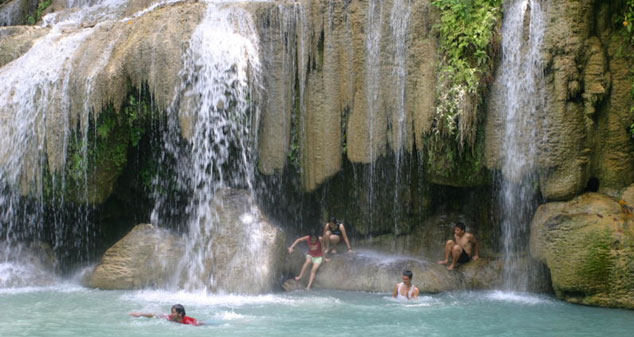
About The Region

The island was probably first inhabited about 15 centuries ago, settled by fishermen from the Malay Peninsula and Southern China. It appears on Chinese mapsdating back to 1687, under the name Pulo Cornam. The name Samui is mysterious in itself. Perhaps it is an extension of the name of one of the native trees, mui, or from the Chinese word Saboey, meaning "safe haven". Koh is the Thai word for "island."
Until the late 20th century, Koh Samui was an isolated self-sufficient community, having little connection with the mainland of Thailand. The island was even without roads until the early 1970s, and the 15 km journey from one side of the island to the other involved a whole-day trek through the mountainous central jungles.
Koh Samui has a population of about fifty-five thousand (source: Samui Mayor's Office) and is based primarily on a successful tourist industry, as well as exports of coconut and rubber. It even has its own international airport, Samui Airport, with flights daily to Bangkok and other major airports in Southeast Asia such as Hong Kong and Singapore. Whilst the island presents an unspoiled image to the public perception,economic growth has brought not only prosperity, but changes to the island's environment and culture, a source of conflict between local residents and migrants from other parts of Thailand and other countries. Reflecting Samui's growth as a tourist destination, the Cunard ship MS Queen Victoria (a 2000-plus passenger ship) docked at Samui during its 2008 world cruise.
Samui is located in the Gulf of Thailand, about 35 km northeast of Surat Thani town (9°N, 100°E). The island measures some 21 kilometres at its widest point, and 25 km at its longest. It is surrounded by about sixty other islands, which compose the Ang Thong Marine National Park (Mu Ko Ang Thong National Park) and include other tourist destinations (Ko Pha Ngan, Ko Tao and Ko Nang Yuan).
The island is roughly circular in shape, and is about 15 km across. The central part of the island is an almost uninhabitable mountain jungle, Khao Pom, peaking at 635 m. The various lowland areas are connected together by a single 51 km road, running mostly along the coast to encircle the bulk of the island.
The old capital is Nathon, on the southwest coast of the island. It remains the major port for fishing and inter-island transportation. Nathon is the seat of the regional government, and the true commercial hub of the Samui locals. It has a charming pace, and is almost small enough to walk everywhere. The old Chinese shop houses along the middle street whisper of an exotic history.
Each of Samui's primary beaches is now also nominally considered as a small town, due to the number of hotels, restaurants and nightlife that have sprung up in recent years.